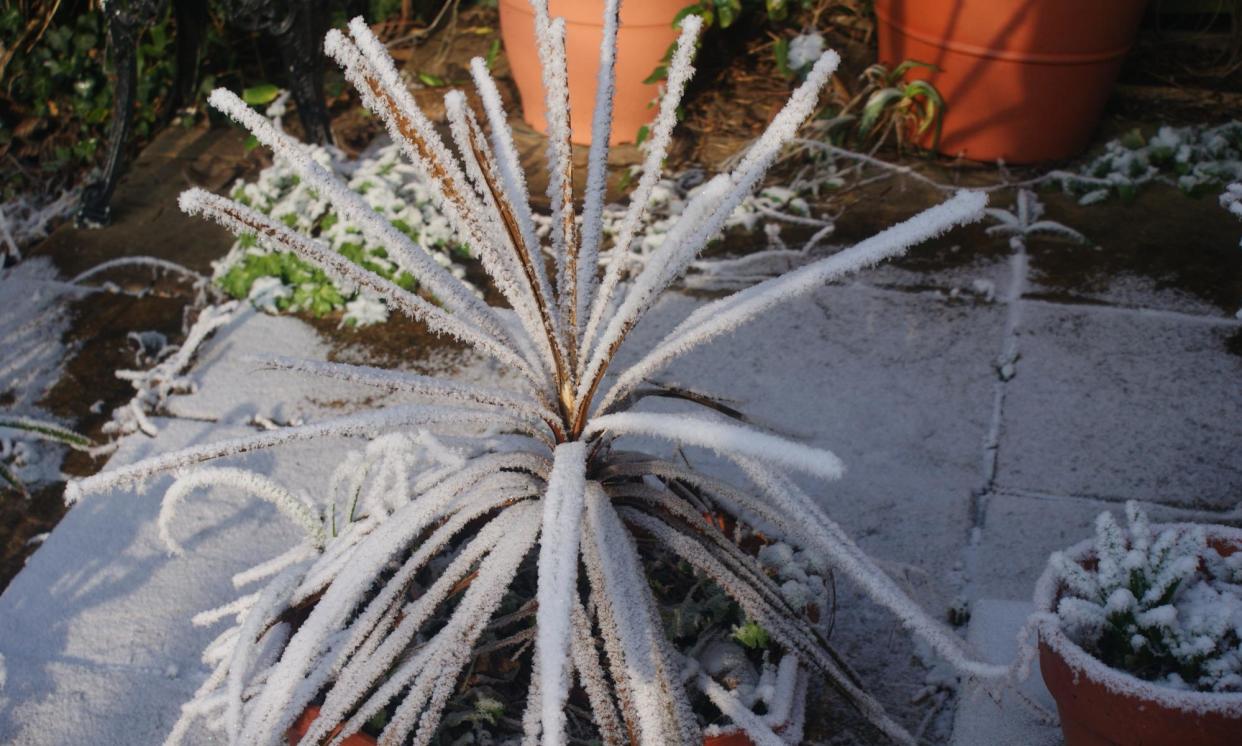Rare ‘industrial snowfall’ thought to be caused by pollution recorded in UK

A rare phenomenon known as “industrial snowfall” appears to have occurred near Heathrow airport earlier this year, according to a study.
Satellite imagery shows three large, white bands on the ground in parts of Surrey despite relatively dry conditions in the area at the time. The snow, which was recorded on 23 January, was distributed near industrial facilities south-east of Heathrow airport.
The “only real explanation” was that pollution triggered the snowfall, said Dr Julian Mayes, an independent weather and climate consultant who saw the snow and authored the study.
Anthropogenic or industrial snowfall can occur when moisture in the air condenses around tiny particles of pollution, for example, forming snowflakes. Conditions must be just right, with sufficiently low temperatures and an abundance of moisture in the atmosphere. Only a handful of cases have been reported in the UK.
“It started with what looked like a frosty morning,” said Mayes, who recalled how freezing fog had enshrouded the village of West Molesey, Surrey, where he lives. “It dawned on me that this was more than frost.”
Upon closer inspection, he realised that the snow was very dry, like “desiccated coconut”, and – unlike frost – it appeared to have been deposited on to surfaces from above. This was initially baffling, Mayes said, because the area was under a ridge of high pressure and there was little if any precipitation expected at the time.
A colleague alerted him to a satellite image of eastern Surrey, taken on the morning of 23 January, which revealed three bands of what looked like light snowfall. Mayes hypothesised that a gentle wind had pushed the industrial snow north-northwest, depositing it along these tracks.
The satellite image also showed a small amount of passing cloud. However, it was “really unlikely” that the snow had been formed by clouds in the more typical manner, said Prof Giles Harrison, of the meteorology department at the University of Reading, who was not involved in the work. For regular snow to have fallen, a weather front would have had to progress through the area, and there was no evidence of this.
Mayes said other factors besides industrial pollution from ground sources could have influenced events that day. These include potential ice trails left in the wake of planes flying in and out of the airport. Moisture from nearby reservoirs might also have had an effect.
But, he added, the evidence pointed towards something prompting water droplets in the fog to enlarge and freeze, becoming snowflakes. Pollution is thought to have provided footholds, or nucleation sites, allowing the droplets to form ice crystals.
Related: How desert shrub’s salty ‘sweat’ collects water from dry air
“It’s fairly special,” said Harrison, who co-authored a 2009 study on some earlier reports of industrial snowfall in the UK. Among these was an occurrence associated with emissions from a cider works. A local person was quoted in the study as having said: “There was a dusting of snow, and the snow had a hint of apple flavour.”
Industrial snowfall was not typically forecast, which is why it could surprise observers, added Harrison.
The phenomenon has also been reported in the US. One case in 2014 in Amarillo, Texas, was blamed on steam from large power plants, which is thought to have turned to snow in the cold February air. “The folks who work at the plants have noticed it for years,” a local energy firm’s spokesperson told the Amarillo Globe-News at the time.
This unusual form of snow would probably become rarer still in the UK, said Harrison, as average temperatures are expected to continue rising due to global heating.
Mayes added that his witnessing the phenomenon was “absolute chance”, given that the snowfall was so localised. “If I’d lived a mile and a half away, I probably wouldn’t have noticed it,” he said.

 Yahoo News
Yahoo News 
